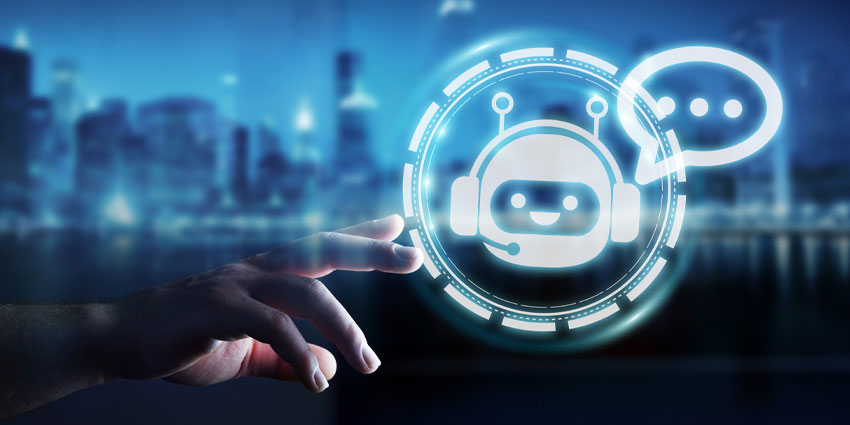Ensuring Security in the Age of Chatbots

In the rapidly evolving digital landscape, chatbots have emerged as a pivotal technology, revolutionizing how businesses interact with their customers. These AI-driven assistants are not just transforming customer service but are also reshaping the way companies handle data and privacy concerns. As chatbots become increasingly integrated into our daily lives, the question of security becomes paramount. This article delves into the world of chatbot security, exploring the challenges and solutions in ensuring that these interactions are secure and data is protected.
Understanding Chatbot Security
Chatbots, by their very nature, handle a vast amount of personal and sensitive data. From basic identification details to more sensitive financial information, chatbots can access and store a wide range of data. This makes them a potential target for cybercriminals. The security of chatbots, therefore, is not just about protecting the integrity of the chatbot itself but also about safeguarding the data it processes.
Key Security Challenges
- Data Privacy and Protection: One of the primary concerns with chatbots is the privacy and protection of user data. Ensuring that personal information is not misused or leaked is crucial.
- Authentication and Access Control: It’s essential to verify the identity of users interacting with chatbots to prevent unauthorized access to sensitive information.
- Encryption of Data: As chatbots transmit data, it’s vital to encrypt this information to protect it from interception by malicious actors.
- Vulnerability to Hacking and Malware: Chatbots can be vulnerable to hacking, where attackers might exploit weaknesses in the chatbot’s design to access sensitive data.
- Compliance with Regulations: Adhering to data protection regulations like GDPR and HIPAA is critical for chatbots handling personal information, especially in the healthcare and financial sectors.
What Is a Chatbot?
At this juncture, it’s pertinent to ask, “What is a chatbot?” A chatbot is an AI-driven software that can simulate a conversation (or a chat) with a user in natural language through messaging applications, websites, mobile apps, or through the telephone. This technology not only enhances customer experience but also provides a wealth of data that can be used for various purposes, including marketing and customer service improvements. However, the very features that make chatbots valuable also make them a target for security threats.
Strategies for Enhancing Chatbot Security
- Robust Authentication Mechanisms: Implementing strong authentication methods, such as two-factor authentication, can significantly reduce the risk of unauthorized access.
- Regular Security Audits and Updates: Conducting frequent security audits and updating the chatbot software can help in identifying and fixing vulnerabilities.
- Data Encryption: Encrypting data both at rest and in transit ensures that even if data is intercepted, it remains unreadable and secure.
- AI and Machine Learning for Threat Detection: Utilizing AI and machine learning algorithms can help in early detection of unusual patterns or potential security threats.
- Compliance with Data Protection Laws: Ensuring that chatbots are compliant with international data protection laws is crucial for maintaining user trust and avoiding legal repercussions.
- User Consent and Transparency: Key in chatbot security, it involves clearly informing users about data collection and usage, obtaining explicit consent for sensitive data, and maintaining transparency in data handling, storage, and sharing.
- User Education and Awareness: Educating users about safe practices, like not sharing sensitive information unnecessarily, can go a long way in enhancing overall security.
- Collaboration with Cybersecurity Experts: Partnering with cybersecurity experts for frequent security assessments and advice helps safeguard chatbots against evolving cyber threats.
Continuous Monitoring and Incident Response
An often overlooked aspect of chatbot security is the need for continuous monitoring and a robust incident response plan. Chatbots, like any other digital platform, require constant surveillance to detect and respond to threats in real time. This involves setting up systems that can identify potential security breaches and having a clear, effective plan to respond to these incidents. This proactive approach not only mitigates the damage caused by security breaches but also helps in quickly restoring normal operations.
Secure Development Lifecycle
Integrating security into the chatbot’s development lifecycle is crucial. This means incorporating security considerations right from the design phase, through development, and into ongoing maintenance. By doing so, security becomes a foundational element of the chatbot, rather than an afterthought. This approach, often referred to as ‘security by design,’ ensures that the chatbot is built with robust security measures from the ground up.
Securing the Future
The integration of chatbots into various sectors is a testament to their efficiency and user-friendliness. However, as with any technology handling sensitive data, ensuring the security of chatbots is of utmost importance. By addressing the key challenges and implementing robust security measures, businesses can not only protect their data but also build trust with their users. As chatbots continue to evolve, so too must the strategies to protect them and the valuable data they handle. The future of chatbot technology is bright, but only if it is securely anchored in a framework that prioritizes data protection and user privacy.






